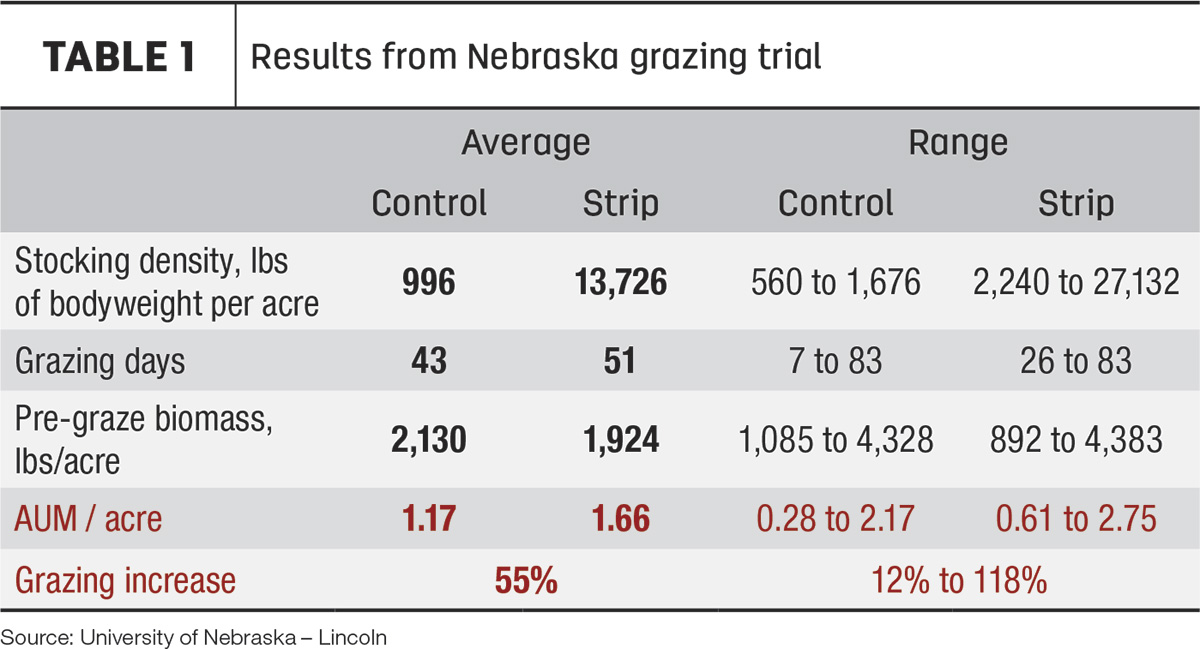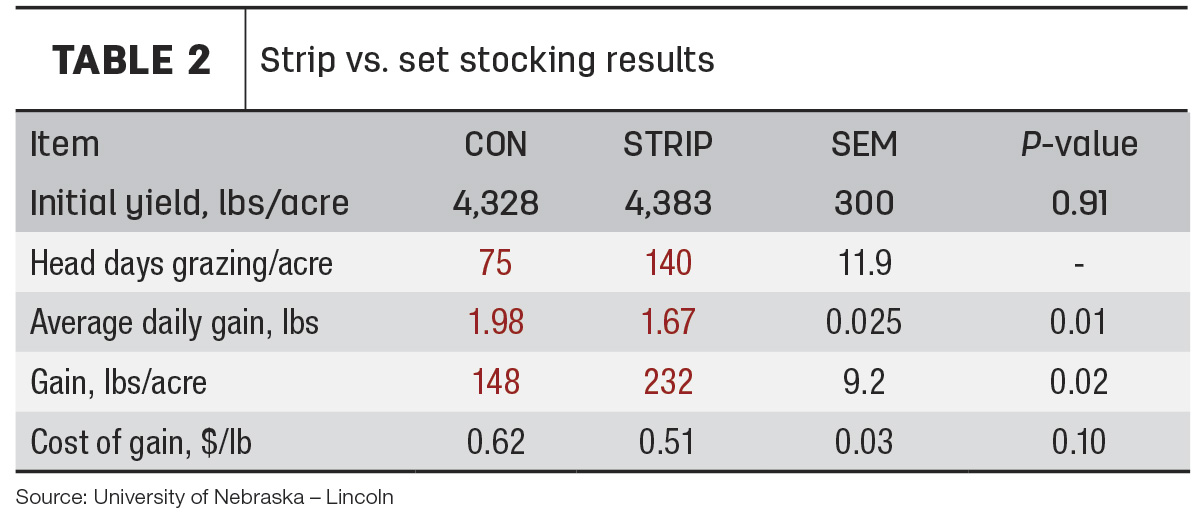In order to find success in the beef industry, producers must often utilize unconventional solutions as needs arise and problems are faced. Because of creative thinking, improvements and innovations have the ability to change procedures for the better, maximizing economic return. These decisions, made as a result of thinking outside the box, strategically balance multiple factors introduced by different struggles and circumstances, whether that be a result of financial situations, animal health or Mother Nature.
In a webinar provided by North Central Sustainable Agriculture Research and Education (SARE) and the University of Nebraska – Lincoln (UNL) Extension Service, producers Brock and Heidi Terrell and extension educator Mary Drewnoski helped address whether strip grazing is worth the additional time and labor when utilizing cover crops in the fall season. UNL Extension educators Erin Laborie and Jack Arterburn began the webinar by introducing what kind of outside-the-box thinking has been proven effective through recent research.
The Terrells farm south of Hay Springs, Nebraska, and collaborate with UNL Extension on projects and farm tours. “They’ve been real outside-the-box thinkers and unafraid to try something unconventional or unpopular. Because of that, it’s been a pleasure getting to work with them, and I appreciate that,” Arterburn said.
Terrell Farms, a cow-calf and feedlot operation, is a third-generation farm that has a history in the usage of cover crops. “In the late ’90s, when we started to look at water irrigation and water restrictions, we started just planting turnips in behind winter wheat as a grazing crop. So, for probably close to 30 years now, we’ve been getting more variety, more species growing on our cover crops,” Brock added. “We just keep doing it, because we feel like we’re gaining on it.” Alongside UNL Extension, Terrell Farms has been an integral component in gathering insight and research to answer the question: Is strip grazing worth it?
Creating data
Throughout the project, the Terrells and Arterburn worked together closely in order to make quick changes and analyze the process firsthand. They reflected on what could be categorized as benefits to the efficiency of the feed and identified possible varieties that could have been adjusted further.
Prioritizing the digestibility and utilization of each strip grazing species allows cattle to apply less energy to finding quality nutrition and more energy to remaining active. According to Brock, using brassicas, such as turnips, along with oats allows cattle to slow down the digestion process while also utilizing high-quality proteins, making a perfect combination for strip grazing. “I like some grass species in there for a lot of reasons, but the more variety that we can throw at that mix, the more risk-tolerant we are,” Brock explained.
The strip grazing setup used by Terrell Farms included an electric wire fence using rebar posts around each field or paddock, which were about 10 acres each. “We used poly wire and step-in posts for all our interior fences, just as a backup. It takes probably 20 minutes to set them up, so that obviously takes planning ahead,” Heidi shared.
“You can be technical and do some forage sampling, but at this point, we kind of just eyeball it as far as the number of head to graze for a week,” said Heidi. “We estimated 10 acres for each paddock, and that was too much. We had better forage there, so I went down to 8 acres per move to stay within that week-to-week move.”
Throughout the project, the Terrells stocked the strips using different stocking densities. “For the continuous in the first year, it was a little less than what would be a cow per acre, and it was more like 15 cows per acre on stocking density. In year two, it was a little over a cow per acre. It’s a stocking rate of about a cow per acre for continuous grazing and 10 to 20 times that for strip grazing,” explained Drewnoski.
Data analysis
When compiled, the project included eight total comparisons. Those comparisons included several locations, where six had oat-brassica mixes, and two had multispecies mixes with warm-season grasses. Five of the locations were stocked with cows, and three had growing calves, with the majority of locations starting the grazing process in the fall. Allocating new strips twice a week, most locations showed that the mixes increased grazing capacity. “On average, there was a 55 percent increase in the grazing capacity through strip grazing,” said Drewnoski (Table 1).

The quality of oats and turnips planted in late fall creates feed value that does not reflect the appearance of the forage post-freeze. “It really maintains its value fairly well, now not quite as well as corn silage, but still pretty good. I think it’s really important to recognize that looks can be deceiving, and then the other thing to point out is we can get pretty good gains on calves,” Drewnoski says. “Because the quality is so high, we do see a little bit of boost in performance by adding that brassica in.” According to Drewnoski, a high-quality strip includes about 30% brassica in order to achieve visible results.
Drewnoski also noted that, while cattle in the strip grazing system had a slightly lower average daily gain (ADG) compared to continuous grazing, that was offset by much higher gains per acre and a lower cost of gain (Table 2).

“The biggest disadvantage to strip grazing will be just having to go out there and do the fencing,” Heidi reflected. “But the advantages, in our opinion, far outweigh these. With the cover crops covering the soil all winter, which is huge to our farming operation, increases in soil productivity and the utilization, you just cannot beat it.”
By utilizing different management tactics and planting a wide variety of species to meet the nutritional needs of cattle no matter what season, strip grazing holds value for the producers who choose to utilize it.
For more information on maximizing economic return with strip grazing, watch the full webinar.







